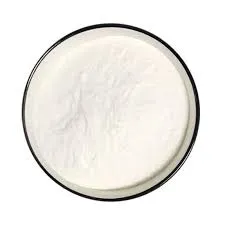
Sep . 13, 2024 18:53 Back to list
hydroxyethyl cellulose structure
Hydroxyethyl cellulose (HEC) is a non-ionic, water-soluble polymer derived from cellulose, which is a natural polymer obtained from plant cell walls. Considered a derivative of methyl cellulose, HEC is modified to enhance its solubility in cold water while retaining its thickening and gelling properties. Its molecular structure comprises a backbone of anhydroglucose units, which are the building blocks of cellulose, with hydroxyethyl groups (-OCH2CH2OH) attached at specific positions on the glucose monomers.
.
In the cosmetic industry, HEC serves as a vital ingredient in numerous personal care products, including lotions, creams, and shampoos. Its ability to improve the texture and stability of formulations ensures a pleasant user experience while providing moisturization benefits without greasiness. As a thickening agent, HEC also enhances the spreadability of products, contributing to their overall efficacy and sensory attributes.
hydroxyethyl cellulose structure

Moreover, HEC's role extends to construction materials, where it is employed in adhesives, paints, and mortars. Its thickening properties enable better workability and adhesion, while its water retention capability helps to prevent the drying of mixtures, allowing for extended application times.
HEC’s versatility is attributed to its structural characteristics, where the degree of substitution (DS) of hydroxyethyl groups can be controlled to tailor performance properties. By adjusting the concentration of HEC in formulations, manufacturers can achieve desired viscosity levels and stability, making HEC a preferred choice in many formulations.
In conclusion, hydroxyethyl cellulose plays a critical role in various industrial applications, showcasing its importance through its unique structural attributes. Its ability to enhance product performance while being derived from renewable resources highlights its significance in a sustainable future. With ongoing research and development, the potential uses of HEC are expanding, further establishing its presence in multiple sectors.
-
Versatile Hpmc Uses in Different Industries
NewsJun.19,2025
-
Redispersible Powder's Role in Enhancing Durability of Construction Products
NewsJun.19,2025
-
Hydroxyethyl Cellulose Applications Driving Green Industrial Processes
NewsJun.19,2025
-
Exploring Different Redispersible Polymer Powder
NewsJun.19,2025
-
Choosing the Right Mortar Bonding Agent
NewsJun.19,2025
-
Applications and Significance of China Hpmc in Modern Industries
NewsJun.19,2025







